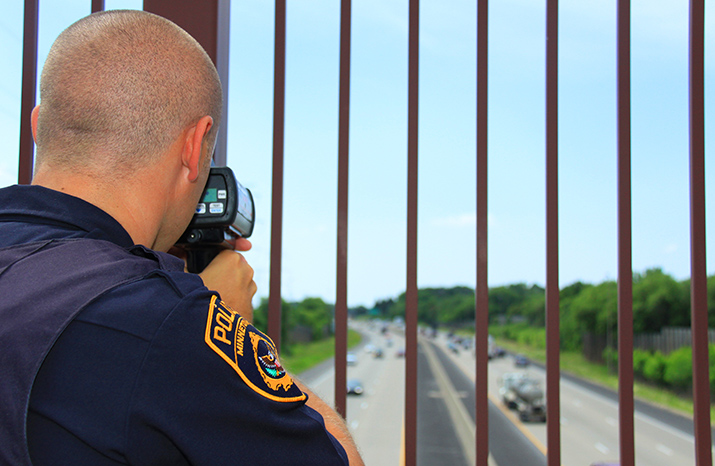6 myths and facts about speeding
July 9, 2018

It’s broad daylight out, the roads are dry as a bone, and you’re going to be late to your friend’s barbecue. Why not press down on the gas a little harder and nudge it up above the speed limit? What could it hurt? Turns out, speeding is hurtful in a lot of ways. Here are some myths about exceeding the speed limit—and the real story behind each.
Myth 1: Speeding is a victimless crime.
Fact: In 2017, 88 people in Minnesota died in speed-related crashes, according to preliminary numbers.
Myth 2: Speeding is okay in the summer because the roads are dry and there’s more daylight.
Fact: There’s a reason they call the period of time from Memorial Day to Labor Day the 100 Deadliest Days on Minnesota roads. The absence of snow, ice, and darkness can make drivers overconfident. For example, during the 100 deadliest days in 2017, preliminary numbers show that excessive speed played a role in 23 fatalities.
Myth 3: I’m a good driver, and speeding doesn’t affect that.
Fact: No matter how good a driver you are, you can’t change the laws of physics. The faster you drive, the more likely you are to lose control of your vehicle and the longer it will take you to stop. It’s harder to avoid a crash, too, because you have less time to respond to the unexpected—and the faster you go, the more severe a crash will be, which could lead to more severe injuries and death.
Myth 4: I know how fast to drive – most speed limits are arbitrary, anyway.
Fact: The Minnesota Department of Transportation carefully takes lots of factors into account when setting the speed limit for a particular stretch of road. These include the road type and condition, location and type of intersections and entrances, existing stop signs and signals, crash history, and traffic volume, to name a few.
Myth 5: It’s okay to drive a little bit above the speed limit.
Fact: There is no “grace zone” for speed. By law, the posted speed limit is the maximum speed you should be going, period, and if you exceed it, it can cost you. It can vary by county, but you can generally spend more than $110 for a ticket and court fees for driving 10 mph over the limit. For 20 mph over the limit, fines double, and you can lose your license for six months if you drive 100 mph or more.
Myth 6: Law enforcement doesn’t care if I speed. They have better things to do.
Fact: Part of law enforcement’s job is to keep Minnesotans safe on the road. When you speed, you make the roads more dangerous – so yes, they care if you speed. In fact, the Minnesota Department of Public Safety Office of Traffic Safety is coordinating with more than 300 law enforcement agencies throughout the state to step up enforcement and awareness of speeding right now. The campaign runs through July 22.
So don’t let these gorgeous summer days fool you: Exceeding the speed limit is still dangerous, even on dry roads in broad daylight. Leave in plenty of time to get to your destination, observe all posted speed limits on your way, and most of all, have a safe summer.

